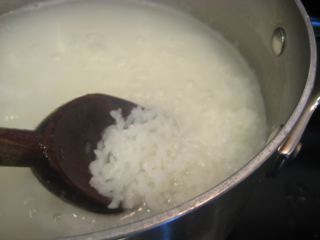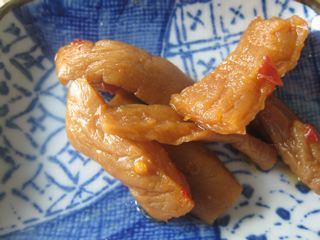The Rice and the Cooker
Hsiao-Ching Chou
I had always believed there was no reason to buy a fancy rice cooker, that a $20 basic model would suffice: measure rice, add water, press button, wait 25 minutes and voila. For many cooks, that belief rings true.
For our wedding, my husband, Eric, and I received a Krups all-in-one rice cooker/slow cooker/steamer, which was as fancy a rice cooker I'd ever used. But the rice-cooking function broke within a year, which was disappointing for something that cost about $60. I still managed to use it for more than four years by using the steam fun ction to cook the rice. It wasn't perfect, but it did the job. It wasn't until I threatened to buy a $20 rice cooker from the drug store that my husband finally agreed to discuss replacing our Krups. (You see, for Eric, form often precedes function when it comes to kitchen appliances, which means that my $20 all-function-no-form rice cooker would offend his sensibilities.)
ction to cook the rice. It wasn't perfect, but it did the job. It wasn't until I threatened to buy a $20 rice cooker from the drug store that my husband finally agreed to discuss replacing our Krups. (You see, for Eric, form often precedes function when it comes to kitchen appliances, which means that my $20 all-function-no-form rice cooker would offend his sensibilities.)
I have always been curious about the Zojirushi cookers that Waji sells, but the price point has been a deterrent. Some models are several hundred dollars -- though they feature induction heating. We settled on a Tiger Jag-B cooker that we found for about $90. It resembles the lower-end Zojirushis, but at a more affordable price. What sold me was that this type of rice cooker has settings for different kinds of rice: three settings for plain rice, as well as options for sweet rice, brown rice, and congee. How great is that? I wonder why I never bothered to look under the hood, so to speak, of this style of rice cooker. I guess I was always  put off by the price tag. The first pot of rice I made with the Jag-B was so delicious that I immediately started chastising myself for putting up with the broken Krups for all this time. I have good knives and good pans, why not a good rice cooker? Rice is the core of a Chinese meal, after all.
put off by the price tag. The first pot of rice I made with the Jag-B was so delicious that I immediately started chastising myself for putting up with the broken Krups for all this time. I have good knives and good pans, why not a good rice cooker? Rice is the core of a Chinese meal, after all.
If you've bought rice recently, you may have noticed the "new crop" label on bags. New crop rice available from November through February tends to be the "freshest." It's probably more accurate to say that new crop rice contains more moisture. Rice aficionados swear by the flavor difference of new crop. It's worth spending the extra money for a brand such as Tamanishiki. Just look for the golden yellow bag with the "new crop" label. It is an absolute revelation to taste rice this good. One bite will make you understand why the Chinese believe that rice is the centerpiece and the accompanying dishes are considered "condiments."





